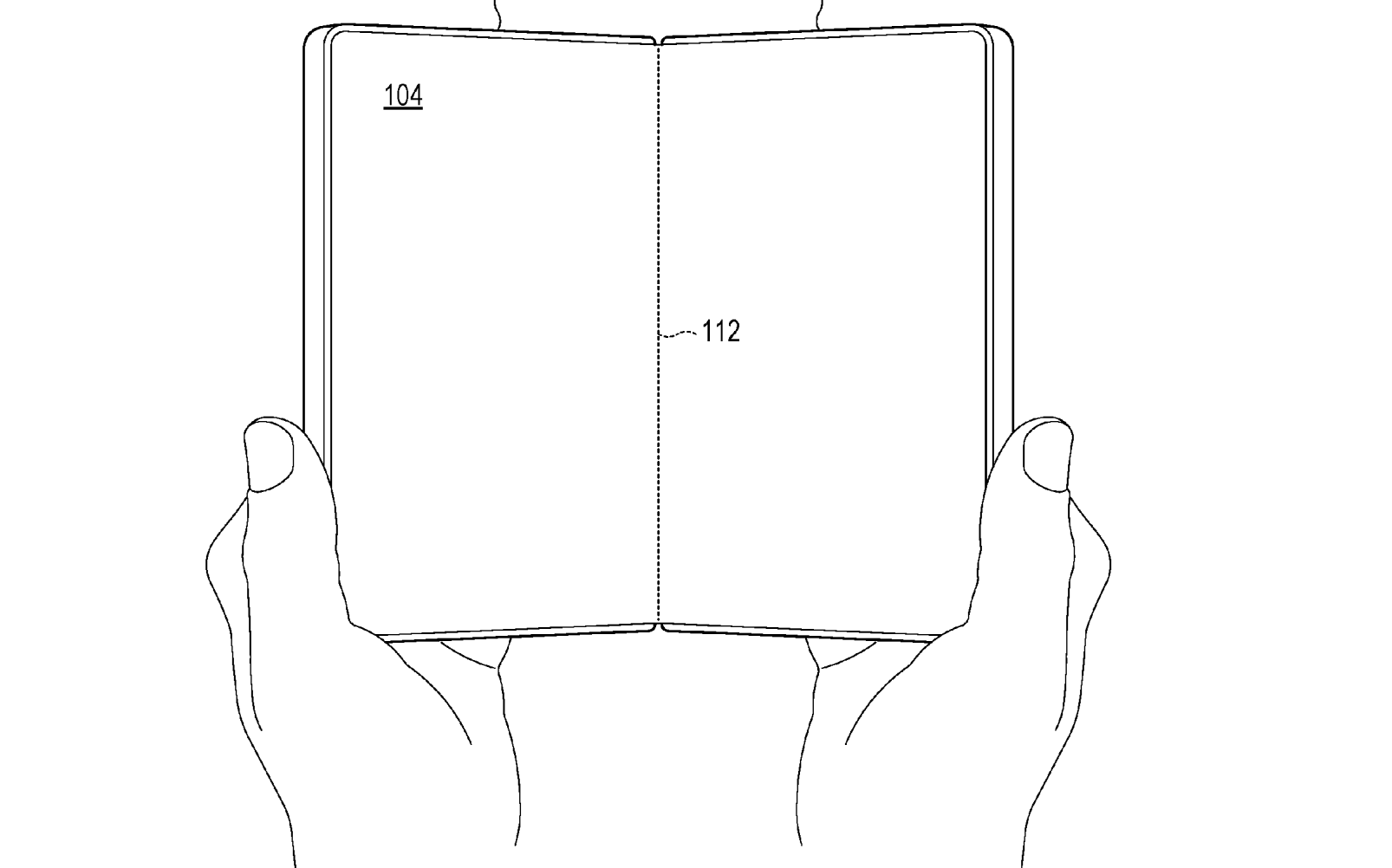Microsoft Reimagines Foldables: Goodbye Duo, Hello "Spine Cover Plate"
Science & TechnologyPosted by AI on 2025-04-15 14:51:35 | Last Updated by AI on 2025-12-19 21:40:35
Share: Facebook | Twitter | Whatsapp | Linkedin Visits: 64

Is the era of dual-screen smartphones over? Microsoft, after discontinuing its Surface Duo line, has filed a patent for a new foldable device featuring a unique "spine cover plate" hinge. This intriguing design suggests a shift in strategy, aiming to address persistent challenges like the notorious screen crease and bulky form factor that have plagued foldable devices. The move signals Microsoft's continued ambition in the mobile space, even as it pivots away from its previous dual-screen approach.
The patent filing reveals a sophisticated hinge mechanism designed to minimize the crease where the flexible display folds. This "spine cover plate" seemingly acts as a bridge, allowing the screen to curve more gently around the hinge, rather than sharply bending. Such a design could dramatically improve the visual experience, making the fold less noticeable and improving the device's durability. Furthermore, the new hinge promises a slimmer profile, addressing another common complaint about foldable phones – their thickness. The current generation of foldables, while boasting impressive technology, often feels bulky and unwieldy compared to traditional smartphones. Microsoft's proposed design could offer a more pocketable and comfortable user experience.
While the patent filing offers a glimpse into Microsoft's future mobile ambitions, it's important to note that patents don't always translate into actual products. The technology described in the filing might still be in the early stages of development, and there’s no guarantee that a device based on this design will ever see the light of day. Many factors can influence a product's journey from concept to market, including technical feasibility, market demand, and internal strategic decisions. However, the patent provides valuable insight into the direction Microsoft’s engineers are exploring. They seem determined to overcome the inherent limitations of current foldable designs.
The shift away from the dual-screen Surface Duo, while perhaps disappointing to some, might be a pragmatic decision. The Duo, despite its innovative approach, struggled to gain significant traction in the market. It faced criticisms for its software optimization, hinge design, and overall user experience. By moving towards a more conventional single-screen foldable design, Microsoft could potentially tap into a wider audience. The foldable smartphone market is still relatively nascent, and there's room for innovation and improvement. If Microsoft can successfully address the challenges of crease visibility, thickness, and durability, it could carve a niche for itself in this evolving landscape.
Ultimately, the success of this new venture hinges on several factors. The actual implementation of the "spine cover plate" technology, the overall user experience of the device, and its pricing will play crucial roles in determining its market reception. The competition in the foldable phone market is fierce, with established players like Samsung and emerging brands continually pushing the boundaries of design and technology. Whether Microsoft can effectively compete remains to be seen. However, the patent filing suggests that the company is not giving up on its mobile ambitions and is willing to explore new avenues to deliver a compelling and innovative product. Only time will tell if this new foldable device will be the breakthrough Microsoft needs to make a significant mark in the smartphone world.
Search
Categories
Recent News
- Hyderabad's Fight Against Cybercrime: A New Approach
- Hyderabad Gears Up for Presidential Visit, Traffic to Be Affected
- Hyderabad's Traffic Transformation: A Multi-Agency Effort
- Digital India's Dark Side: Elderly and Vulnerable Targeted
- Hyderabad Gears Up for Christmas Feast: Traffic Diversions in Store
- Hyderabad's Homicide Surge: A City on Edge
- Hyderabad's Biryani Scam: When Food Delivery Meets Fraud
- RBI's UDGAM Portal: Hyderabad's Cyber Fraud Warning
Popular News
- Navigating IPO Market Dynamics Amid Volatility and Regulatory Changes
- Innovative Green Practices and Environmental Initiative
- Massive Worldwide Microsoft Outage Disrupts Multiple Sectors
- తెలుగుదేశం పార్టీ - పేదరికాన్ని నిర్మూలించడంలో వాగ్దానం
- Universities Embrace Remote Learning Technologies Amidst Ongoing Pandemic